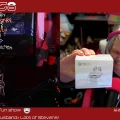Microsoft Pluton adds an extra step to installing Linux on Lenovo laptops, Canonical makes the Firefox Snap snappy, retro gaming with Mac OS 7, and what desktop environments use the most resources?
Listen:
Timestamps:
00:00 Intro
03:52 Giving up on GitHub
10:32 GNOME browser extensions
14:32 GTK5 dropping X11
17:32 X11 desktops in Wayland
26:47 $6 Pico Pi
29:27 RISC V from Pine
Windows OS on Lenovo Secured-core PCs
https://www.theregister.com/2022/07/11/lenovo_secured_core/
- The latest Pluton-equipped laptop from Lenovo that really love Windows.
- Thanks to the secured-core you have to enable the Microsoft 3rd Party UEFI Certificate.
- Lenovo said they should have it enabled for their Linux preloaded systems – but it isn’t for the Windows preload.
- This reminds me of the early years of Secure Boot, when we had trouble booting Linux.
- Lenovo has been a great partner to the Linux community, and will, hopefully, fix this soon.
- Especially since their awesome ThinkPads are the swiss army knife for us Linux users, whether Windows is installed or not.
- The reason UEFI Secure Boot is present on most x86 systems is that Microsoft mandated it back in 2012.
- Essentially, if the Lenovo laptop does not allow to boot on linux (or anything that is not Microsoft sanctioned) by default without a modification of the boot options, this is not because of Lenovo but because, in order to be certified by Microsoft, Lenovo has to comply with a set of rules that are not public and as such, impossible to follow for non-Microsoft entities.
Firefox Snap 3 (RTheren)
https://ubuntu.com//blog/improving-firefox-snap-performance-part-3
- The latest improvements look to deliver an average 50% reduction in start time after a fresh install compared to Firefox 101.
- You can test them out in the latest Firefox on the Snap store.
- Firefox now only loads one locale at a time.
- Switched compression to LZO.
- They are experimenting with multi-threaded CPU decompression.
- This is part 3 of improving the Firefox snap speed on Ubuntu, and the team has made significant strides this round! 50% reduction in start time after a fresh install.
- Firefox now only loads one locale at a time, based on the system setting.
- The Firefox snap depends on both the gnome-3-38-2004 and gtk-common-theme snaps, which were still being delivered compressed using the XZ algorithm.
- Switching their compression to LZO also has an additional benefit:
- This change doesn’t just affect Firefox, but also affects the start times of ALL snaps that depend on the GNOME and GTK snaps, including Chromium and Thunderbird!
- The results are pretty much the same across all distributions.
- They are asking the community to share your benchmarks with them.
- The easiest way to record your startup time is to use the GNOME extension, Applications Startup Time Measure and noting the times for the following three scenarios:
- Startup time after a completely fresh install of Firefox
- Startup time launching Firefox after a system reboot
- Startup time on subsequent Firefox launches
- And then report them by submitting your timings on the ‘Known issues with Firefox snap?’ Discourse topic with details of the release you’re running and the hardware specifications of your machine.
Desktop resource usage
https://vermaden.wordpress.com/2022/07/12/desktop-environments-resource-usage-comparison/
- Where is GNOME?
- Desktop environments using >1G of ram as standard strikes me as insane.
- Even XFCE is getting up there with 7/800 MB on my workstations.
- On Debian 11 XFCE requires 417 packages and Plasma needs 964.
- Obviously an X window manager like Openbox will use less RAM, especially when testing single core performance.
- And, yes, GNOME and KDE all benefit from a multicore environment and 3D acceleration.
- MATE having lower memory usage than XFCE doesn’t surprise me, especially because of how nicely it runs on the Raspberry Pi.
Slice of Pi
MacPi
https://github.com/jaromaz/MacintoshPi
- Retro gaming is mainstream these days.
- Everyone is doing it so you need something that stands out, something different.
- Look no further because running MACOS7/9 just got wicked easy.
- It even comes with active online connection and modem emulation.
- I like that the PowerPC emulator is named SheepShaver.
- MacintoshPi is an awesome project that allows running full-screen versions of Apple’s Mac OS 7, 8 and 9 with sound, and internet via old school modem emulation on a Raspberry Pi!
- And it runs without an Xorg manager and only needs a multimedia SDL2 library and from the CLI using Raspberry Pi OS Lite.
- Installation requires running a single script on a clean Raspberry Pi OS Lite and waiting about two hours for the packages to compile and install. LOL
- The entire MacintoshPi project runs on Raspberry Pi Zero 2 W, 2, 3, 3B, 3B+, but not 4 yet.
- And I was happy to see that it uses the Macintosh 69k emulator Basilisk II, which supports Mac OS 7 and 8 classic.
- And the PowerPC emulator SheepShaver which supports Mac OS 9.
- I have been using Basilisk II and SheepShaver for years to run the classic Mac OS on my Linux boxes.
- And it uses the VICE emulator to run Commodore 64/128/PET OSs!











